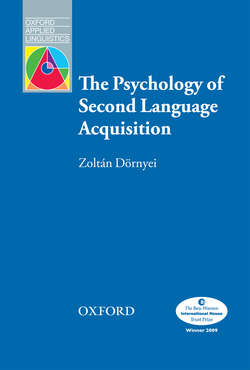Читать книгу The Psychology of Second Language Acquisition - Zoltan Dornyei - Страница 12
На сайте Литреса книга снята с продажи.
1
Introduction: mapping the terrain
Interim summary: the permeability of disciplinary boundaries
ОглавлениеWe have arrived at a new phase of studying the acquisition and processing of language, and one of the most obvious characteristics of modern times is the increasing fluidity of academic identities and the growing permeability of disciplinary boundaries. Nobody is surprised nowadays to see, for example, a former hardcore generative linguist becoming engaged in developmental psycholinguistic research (perhaps also doing some neuroimaging on the side), and it does not seem strange at all that a scholar might align him/herself simultaneously with applied, cognitive, and psycholinguistics. There is an increasing amount of common ground in the various subdisciplines, making it possible to straddle the borders between them or to completely cross the boundaries, dipping in and out. Thus, it seems to me that the main academic organizational force at present is not so much the inherent content of the various disciplines and strands as the individual scholars’ subjective affiliation to professional organizations and conferences as their main reference points.
Interestingly, the academic community is behaving very much like a complex system would, with new directions and groupings emerging as a result of the field’s self-organizing capacity. A classic example of this emergent feature is the appearance of ‘bilingualism’ as an academic rubric: strictly speaking it is not an academic discipline (and, accordingly, I will discuss it in more detail later under the various types of language attainment) and yet it has now its own journals and well-attended international conventions – in fact, an increasing number of scholars who used to call themselves applied linguists, psycholinguists, or SLA researchers now fly the bilingualism banner. It would be an intriguing study to apply dynamic systems theory (See Ch. 3) to the analysis of the evolution and sociology of SLA research. In any case, the main lesson for our current purpose is that we need not worry too much about the exact labelling of research directions. My personal feeling is that we are all inevitably becoming, at least partially, cognitive neuroscientists specializing in second language issues.
